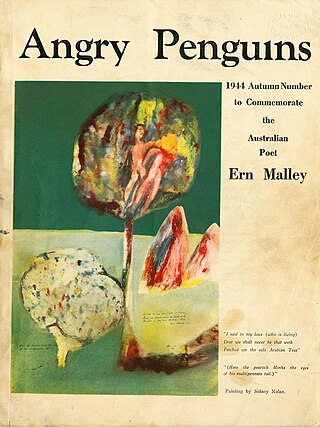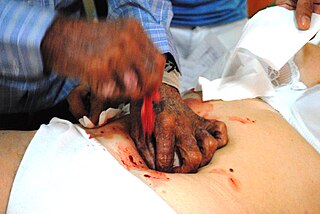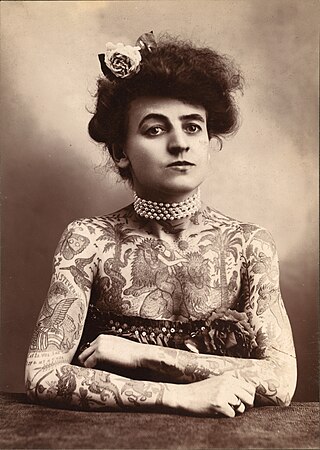The Sokal affair, also called the Sokal hoax, was a demonstrative scholarly hoax performed by Alan Sokal, a physics professor at New York University and University College London. In 1996, Sokal submitted an article to Social Text, an academic journal of cultural studies. The submission was an experiment to test the journal's intellectual rigor, specifically to investigate whether "a leading North American journal of cultural studies—whose editorial collective includes such luminaries as Fredric Jameson and Andrew Ross—[would] publish an article liberally salted with nonsense if (a) it sounded good and (b) it flattered the editors' ideological preconceptions."

The Tom Collins is a Collins cocktail made from gin, lemon juice, sugar, and carbonated water. First memorialized in writing in 1876 by Jerry Thomas, "the father of American mixology", this "gin and sparkling lemonade" drink is typically served in a Collins glass over ice. A non-alcoholic "Collins mix" mixer is produced, enjoyed by some as a soft drink.

A hoax is a widely publicized falsehood so fashioned as to invite reflexive, unthinking acceptance by the greatest number of people of the most varied social identities and of the highest possible social pretensions to gull its victims into putting up the highest possible social currency in support of the hoax.

The Ern Malley hoax, also called the Ern Malley affair, is Australia's most famous literary hoax. Its name derives from Ernest Lalor "Ern" Malley, a fictitious poet whose biography and body of work were created in one day in 1943 by conservative writers James McAuley and Harold Stewart in order to hoax the Angry Penguins, a modernist art and literary movement centred around a journal of the same name, co-edited by poet Max Harris and art patron John Reed, of Heide, Melbourne.
The bathtub hoax was a famous hoax perpetrated by the American journalist H. L. Mencken involving the publication of a fictitious history of the bathtub.

Psychic surgery is a pseudoscientific medical fraud in which practitioners create the illusion of performing surgery with their bare hands and use sleight of hand, fake blood, and animal parts to convince the patient that diseased lesions have been removed and that the incision has spontaneously healed.

Quackwatch is a United States-based website, self-described as a "network of people" founded by Stephen Barrett, which aims to "combat health-related frauds, myths, fads, fallacies, and misconduct" and to focus on "quackery-related information that is difficult or impossible to get elsewhere". Since 1996 it has operated the alternative medicine watchdog website quackwatch.org, which advises the public on unproven or ineffective alternative medical remedies. The site contains articles and other information criticizing many forms of alternative medicine.
Josef Papp was an engineer who was awarded U.S. patents related to the development of an engine, and also claimed to have invented a jet submarine.

April Fools' Day or All Fools' Day is an annual custom on 1 April consisting of practical jokes and hoaxes. Jokesters often expose their actions by shouting "April Fools!" at the recipient. Mass media can be involved with these pranks, which may be revealed as such the following day. The custom of setting aside a day for playing harmless pranks upon one's neighbour has been relatively common in the world historically.

A death hoax is a deliberate report of someone's death that is later proven to be untrue. In some cases it might be because the person has intentionally faked death.
The Skcin computer tan hoax was a hoax website set up by skin cancer charity Skcin in 2009 to spread awareness about skin cancer through the Internet. The fake company was promoted by leaflets, street marketing and online ads, and purported to offer an "online tanning service" where the user's computer monitor could be calibrated to emit ultraviolet tanning rays.
Fictive art is a practice that involves the production of objects, events, and entities designed to support the plausibility of a central narrative. Fictive art projects disguise their fictional essence by incorporating materials that stand as evidence for narrative factuality and thus are designed to deceive the viewer as to their ontological status. Very often, these materials take a form that carries presumptive cultural authority, such as 'historical' photographs or 'scientific' data. The key tension in fictive art projects stems from the impossibility of 'making real' a fiction, no matter how many or what kinds of objects are produced as evidence. Since fictive art projects are designed to pass at least temporarily as 'real', fictive artists may draw opprobrium as hoaxers, pranksters, forgers, or con artists when their projects are revealed as fictional.
A sick baby hoax is a confidence trick where a person claims, often on a website, that they have an ill child and are struggling to pay for their medical expenses. Some versions of the hoax ask people to make a monetary donation directly, while others simply encourage people to share the story.
Gordon Stein was an American author, physiologist, and activist for atheism and religious skepticism.
The Jessica Mydek hoax was a popular chain letter, circulated by hoaxsters, to play on the sympathy of credulous readers, and get them to respond, so as to build a sucker list. The letter was first observed in 1997.

Maud Stevens Wagner was an American circus performer. She was the first known female tattoo artist in the United States.

Jar'Edo Wens was a deliberately fictitious Wikipedia article which existed for almost 10 years before being spotted in November 2014 and deleted in March 2015. At the time, it was the longest-lasting hoax article discovered in the history of Wikipedia.

The Economic Daily is a Chinese state-owned newspaper focusing on economic reports. Founded in Beijing on January 1, 1983, the newspaper is a deputy ministerial-level institution under the State Council. The newspaper is managed by the Central Propaganda Department of the Chinese Communist Party.









